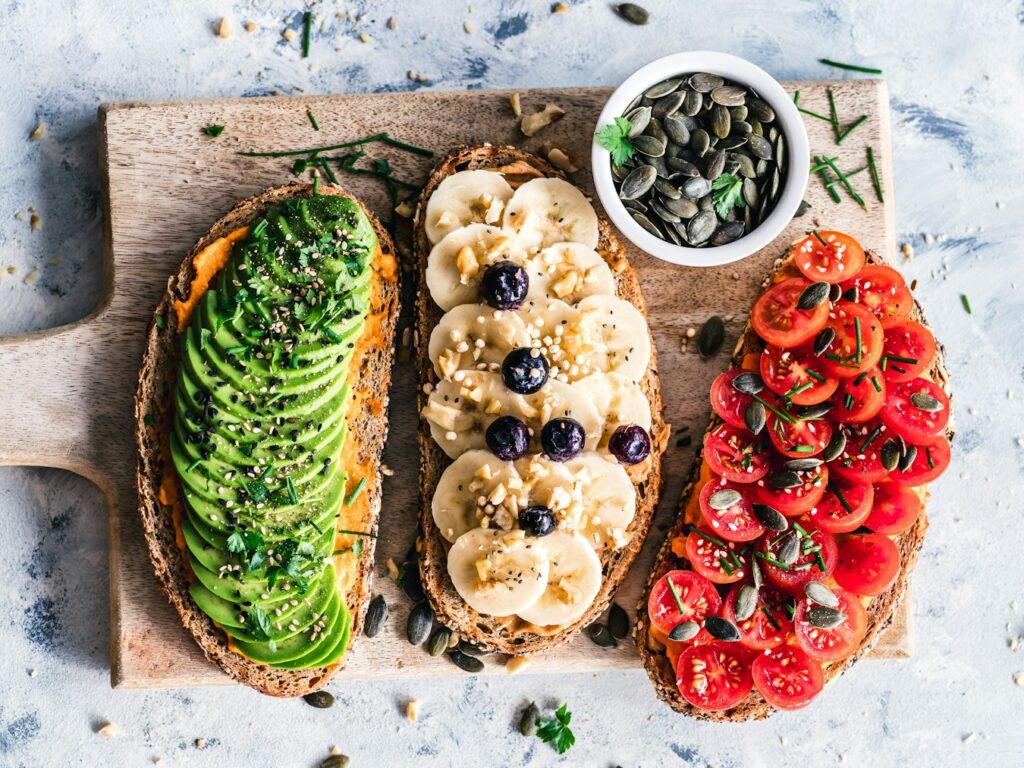Have you ever wondered why certain foods make you feel energized while others leave you feeling sluggish? Or why traditional healing systems have specific dietary recommendations for different health conditions? The answer lies in holistic nutrition—an approach to eating that sees food not just as fuel, but as a powerful form of medicine.
Holistic nutrition is an ancient concept deeply rooted in Eastern medical traditions that views food as more than just a collection of nutrients. Instead, it recognizes the profound connection between what we eat and our overall wellbeing—physically, mentally, emotionally, and even spiritually. Unlike conventional Western nutrition that often focuses solely on calories, macronutrients, and micronutrients, holistic nutrition examines how foods interact with our unique bodies and how they contribute to our overall state of balance.
In Eastern traditions, particularly Traditional Chinese Medicine (TCM) and Ayurveda, food isn’t just something that fills your stomach—it’s therapy. Each ingredient carries specific properties that can either heal or harm depending on your individual constitution and current state of health. This wisdom, developed over thousands of years of observation and practice, offers us profound insights into what is holistic nutrition and how we can harness its power for optimal wellness.
Food as Medicine: The Eastern Philosophy That Changes Everything
“Let food be thy medicine and medicine be thy food.” While often attributed to Hippocrates, this philosophy has been central to Eastern healing traditions for millennia. The concept of food as medicine is perhaps the most fundamental principle of holistic nutrition, suggesting that what we eat can either promote health or contribute to disease.
In Eastern medical systems, foods are classified not just by their nutritional content but by their energetic properties, flavors, and therapeutic effects on the body. For instance, ginger isn’t just a flavorful root—it’s a warming herb that stimulates circulation, aids digestion, and helps expel cold from the body. Similarly, bitter greens like dandelion aren’t merely sources of vitamins; they’re cooling agents that help detoxify the liver and reduce internal heat.
Consider this: when you have a cold, Eastern traditions might recommend a spicy soup with garlic, ginger, and green onions to induce sweating and help release pathogens from the body. When you’re feeling anxious or overheated, cooling foods like cucumber, watermelon, or mint tea might be prescribed to calm your system. This isn’t just folklore—modern research increasingly confirms the therapeutic compounds in these foods that produce the effects observed by ancient healers.
A study published in the Journal of Ethnopharmacology found that many traditional food remedies contain bioactive compounds with medicinal properties that align perfectly with their traditional uses. For example, the curcumin in turmeric has powerful anti-inflammatory effects, which is why it’s been used in Eastern cooking for joint pain and inflammation for centuries.
What is holistic nutrition if not this profound understanding that every bite we take is an opportunity to heal? By embracing food as medicine, we transform our kitchens into pharmacies and our meals into powerful therapeutic tools.
Finding Balance: The Dance of Yin and Yang on Your Plate
At the heart of holistic nutrition lies the concept of balance—specifically, the balance of opposing yet complementary forces known as Yin and Yang. In Eastern philosophy, these forces exist in everything, including the foods we eat.
Yang foods are generally warming, energizing, and stimulating. They include most meats, spicy foods, roasted nuts, and foods cooked at high temperatures. These foods heat the body, increase metabolism, and generate energy. In contrast, Yin foods are cooling, calming, and moistening. Fresh fruits, raw vegetables, seaweed, and most dairy products fall into this category. These foods help cool the body, calm the mind, and promote rest.
The magic of holistic nutrition happens when we maintain a proper balance of these energies through our diet, something that Eastern mind-body wisdom has understood for centuries. In summer, when the external environment is hot (Yang), Eastern wisdom suggests incorporating more cooling (Yin) foods like watermelon, cucumber, and leafy greens to maintain balance. In winter, the opposite applies—warming foods like root vegetables, warming spices, and slow-cooked soups help counteract the external cold.
But it’s not just about the seasons. If you tend to run “hot”—perhaps you’re easily irritated, experience inflammation, or have redness in your face—a diet with more cooling Yin foods might help restore balance. Conversely, if you feel chronically cold, tired, or have slow digestion, emphasizing warming Yang foods could be beneficial.
“In Eastern nutrition, there is no one-size-fits-all approach,” explains Dr. Mia Chen, a TCM practitioner and nutritionist. “The goal is always balance, but the path to balance varies from person to person and even from season to season.”
Understanding what is holistic nutrition means recognizing this dynamic interplay of energies and how our food choices can help maintain or restore this delicate equilibrium.
Constitutional Eating: Your Body’s Unique Nutritional Blueprint
One of the most revolutionary aspects of holistic nutrition is the concept of constitutional eating—the idea that your optimal diet should be tailored to your unique body constitution or type.
In Traditional Chinese Medicine, practitioners identify five main constitutional types based on the Five Elements theory: Wood, Fire, Earth, Metal, and Water. Each type has specific tendencies, strengths, and weaknesses that influence how they respond to different foods. Similarly, Ayurveda categorizes people into three main doshas—Vata, Pitta, and Kapha—each with distinct characteristics and dietary needs.
For instance, someone with a “Fire” constitution in TCM or “Pitta” dosha in Ayurveda tends to run hot, may be prone to inflammation, and often has a strong appetite. Their ideal diet would emphasize cooling foods like bitter greens, sweet fruits, and foods with high water content, while minimizing spicy, fried, and heating foods that could exacerbate their natural tendencies.
In contrast, someone with a “Water” constitution or “Kapha” dosha might struggle with slow digestion, weight gain, and feeling cold. They would benefit from warming, light, and stimulating foods while reducing heavy, cold, or overly sweet foods that could worsen their innate imbalances.
How do you determine your constitution? While a thorough assessment from a trained practitioner is ideal, you can start by observing patterns in your body and health. Do you tend to feel hot or cold? Is your digestion quick or slow? Are you naturally energetic or more relaxed and methodical? These clues can help you begin to understand your constitutional tendencies.
“Constitutional eating is perhaps the most personalized form of nutrition,” says nutritionist Sarah Wu. “It acknowledges that what’s healthy for one person might not be ideal for another—a concept that modern nutritional science is only beginning to recognize through nutrigenomics.”
This personalized approach is at the core of what is holistic nutrition—recognizing that dietary recommendations need to be as unique as the individuals following them.
Beyond Functional Nutrition: The Holistic Difference
While functional nutrition has gained popularity for its focus on addressing the root causes of health issues through diet, holistic nutrition takes this approach even further by considering dimensions beyond the physical body.
Functional nutrition examines how foods affect our biochemistry, focusing on nutrient deficiencies, food sensitivities, and metabolic processes. It’s certainly more comprehensive than conventional nutrition, but it still primarily operates within a physical framework.
Holistic nutrition encompasses this physical dimension while also considering how foods affect our energy, emotions, mind, and spirit. In Eastern traditions, certain foods are said to nourish the Heart (which governs emotional wellbeing), while others support the Kidney (associated with willpower and vitality) or the Spleen (connected to mental focus and worry).
For example, in TCM, bitter foods like dark leafy greens aren’t just good for liver detoxification—they’re also believed to clear mental confusion and support decision-making, a principle supported by Traditional Chinese Medicine dietary practices. Sweet foods in moderation don’t just provide energy—they nourish the Spleen and stomach systems, which are associated with overthinking and worry when imbalanced.
“What we eat affects not just our physical health but our emotions and mental clarity,” explains holistic nutritionist Dr. James Liu. “I’ve seen patients transform not just their physical symptoms but their emotional wellbeing and mental focus through dietary changes based on Eastern principles.”
This multi-dimensional perspective is what truly defines what is holistic nutrition—a recognition that we are integrated beings, and that food affects us on every level of our existence.
The Modern Revolution: How EASTCHI AI Bridges Ancient Wisdom and Modern Technology
In today’s fast-paced world, accessing truly personalized nutritional guidance based on Eastern principles can be challenging. Most of us don’t have daily access to TCM doctors or Ayurvedic practitioners who can continually adjust our dietary recommendations based on our changing needs.
This is where innovative solutions like HerbalsZen’s EASTCHI AI come in, bridging the gap between ancient wisdom and modern technology. EASTCHI AI represents a revolutionary approach to holistic nutrition by integrating 2,000-year-old Eastern medical knowledge with cutting-edge artificial intelligence.
Unlike generic nutrition apps that offer standardized advice, EASTCHI AI analyzes your unique constitutional type through the lens of Five Element Theory. It then provides personalized nutrition plans that align with your individual needs, taking into account seasonal changes, your current state of balance, and your health goals.
For instance, EASTCHI AI might recognize that you have a Wood constitution with a tendency toward liver heat and stress. It would then recommend specific cooling foods that benefit the liver, stress-reducing herbs, and balanced meal plans that help harmonize your natural tendencies. As seasons change or as you input changes in your health status, the recommendations evolve accordingly—mimicking the personalized guidance you would receive from a traditional practitioner.
“What makes EASTCHI AI special is that it doesn’t just tell you what to eat—it tells you why, based on Eastern medical theories,” explains the founder of HerbalsZen. “It helps users understand the deeper principles of holistic nutrition, empowering them to make intuitive choices rather than just following rules.”
This innovative approach embodies the essence of what is holistic nutrition in the modern world—honoring ancient wisdom while leveraging technology to make this wisdom accessible and practical for contemporary lifestyles.
Starting Your Holistic Nutrition Journey: Practical Steps
If you’re intrigued by the concept of holistic nutrition and eager to incorporate these principles into your life, here are some practical steps to begin:
Start with awareness: Before making any changes, simply observe how different foods make you feel. Do you feel energized or sluggish after certain meals? Do some foods seem to trigger emotional responses? This mindfulness is the foundation of holistic eating.
Incorporate the five flavors: Eastern nutrition emphasizes the importance of regularly including all five flavors—sweet, sour, bitter, salty, and pungent—in your diet, as each supports different organ systems and bodily functions.
Eat with the seasons: Nature provides what our bodies need in each season. Focus on locally grown, seasonal foods, which tend to naturally balance the external environment’s effects on our bodies.
Cook with intention: In holistic nutrition, how you prepare food matters as much as what you eat. Slow cooking with awareness and positive intention is believed to enhance the food’s healing properties.
Listen to your body’s constitution: Pay attention to whether you generally run hot or cold, whether your digestion is fast or slow, and adjust your diet accordingly rather than following generic advice.
Explore cooling and warming foods: Begin to understand which foods have cooling properties (most fruits, raw vegetables, green tea) and which have warming effects (ginger, cinnamon, roasted nuts, cooked grains). Experiment with balancing these according to your needs.
Consider consulting a professional: While self-exploration is valuable, working with a trained practitioner of TCM, Ayurveda, or holistic nutrition can provide deeper insights tailored to your specific constitution and health needs.
Understanding what is holistic nutrition is just the beginning—implementing these principles as a daily practice is where the true transformation occurs. As the ancient Eastern sages knew, health isn’t something we achieve once and possess forever; it’s a dynamic balance that we cultivate daily through mindful choices, including what we put on our plates.
By embracing the wisdom of holistic nutrition, you’re not just changing your diet—you’re adopting a profound philosophy that recognizes food as a powerful form of medicine and your body as an integrated system of physical, emotional, and energetic components. In this approach, every meal becomes an opportunity not just to nourish your body, but to balance your entire being.



